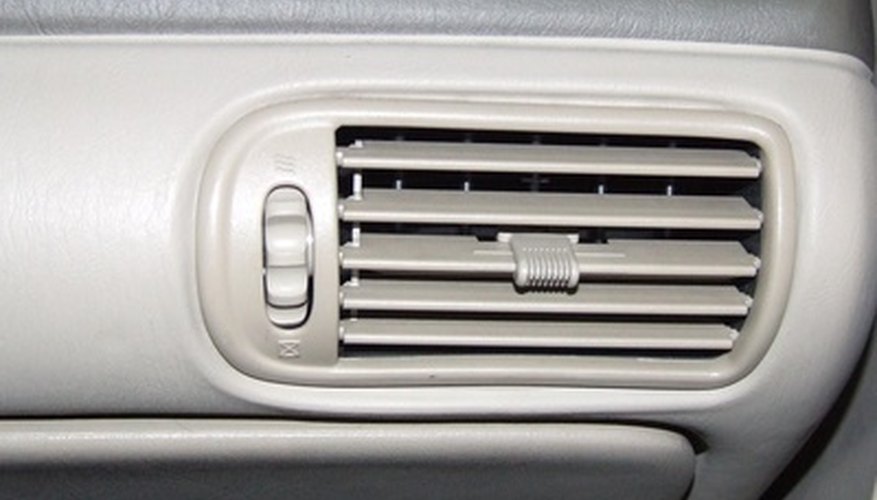Keep the A/C in your Honda CRV up and running in the summer with a little troubleshooting. Problems with the A/C, such as an issue with the compressor or a blown fuse, are fairly easy to diagnose. Before taking your Honda CRV into the shop for what could turn out to be an expensive diagnosis and repair, there are a few troubleshooting steps you can run through on your own.
- Keep the A/C in your Honda CRV up and running in the summer with a little troubleshooting.
Turn on the A/C and the blower fan with the engine running. Check that the dials and buttons are in good working order. If they are loose or difficult to move, you may need to replace them. If the blower fan does not start, the fuse connected to the fan may have blown, or the fan itself may be faulty.
Check the fuse box, which is beneath the trim to the left of the steering wheel. Look for blown fuses. Read the inside panel schematic on how to locate the fuse corresponding to the A/C system. If the thin metal wire inside the glass fuse is damaged or broken, replace it with another fuse of the exact same amperage rating.
- Check the fuse box, which is beneath the trim to the left of the steering wheel.
- If the thin metal wire inside the glass fuse is damaged or broken, replace it with another fuse of the exact same amperage rating.
Inspect the A/C hoses for kinks or leaks. A few drops of refrigerant around the connections is normal. If, however, there is a large amount of oily residue on any of the A/C components, you may need to replace them. If any of the hoses are kinked, squeeze the hose between your thumb and forefinger until the kink has diminished. If this does not resolve the problem, you may have to replace the hose in question.
Start the engine and open the bonnet to examine the two heater hoses near the firewall. (The heater hoses are roughly the same size as a garden hose, and the firewall is the partition that divides the passenger compartment and the engine compartment of your car, which extends from just below the windscreen to below the engine.) Check the temperature of the hoses. One should be slightly cooler than the other. If it is not cooler, you may have to replace the valve control.
Turn the A/C to the coldest setting with the engine running. Check under the bonnet for the magnetic clutch to turn over. The magnetic clutch is attached to the A/C compressor and you should be able to see and hear it as it begins to turn. If the magnetic clutch does not engage, the system may be low on refrigerant and may need a refill. Look for any leaks on the compressor and ensure that the drive belt is securely connected. An excessively noisy compressor may signal cross-contaminated refrigerant, use of the wrong type of compressor lubricant, or the need for a new compressor. If the magnetic clutch is receiving voltage but is not engaging the compressor, the clutch may be defective and may need to be replaced. If you notice leaks around the compressor shaft seal, the seal may need to be replaced.
Use the A/C compression test gauge to check for adequate pressure in the A/C system. Remove the black cap from the low-side service port on the vehicle's air conditioning unit and screw the blue hose to the port. Remove the cap from the high-side port and screw the red hose to the port. The yellow hose is already connected to the gauge. A normal reading should be between 50 and 80 PSI. If the reading is not in this range, there may be a leak in the system that needs repair.
